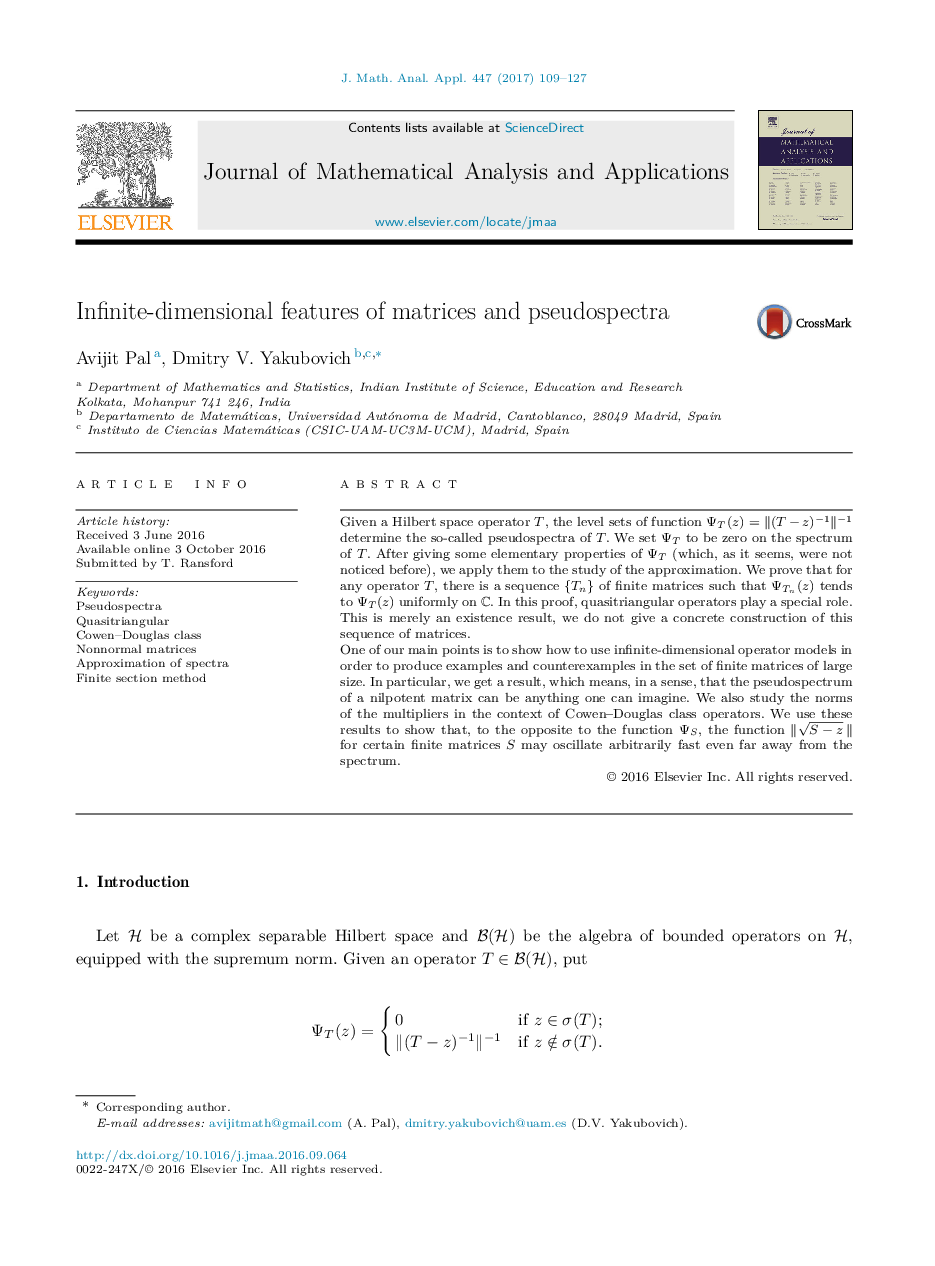| Article ID | Journal | Published Year | Pages | File Type |
|---|---|---|---|---|
| 4613728 | Journal of Mathematical Analysis and Applications | 2017 | 19 Pages |
Given a Hilbert space operator T , the level sets of function ΨT(z)=‖(T−z)−1‖−1ΨT(z)=‖(T−z)−1‖−1 determine the so-called pseudospectra of T . We set ΨTΨT to be zero on the spectrum of T . After giving some elementary properties of ΨTΨT (which, as it seems, were not noticed before), we apply them to the study of the approximation. We prove that for any operator T , there is a sequence {Tn}{Tn} of finite matrices such that ΨTn(z)ΨTn(z) tends to ΨT(z)ΨT(z) uniformly on CC. In this proof, quasitriangular operators play a special role. This is merely an existence result, we do not give a concrete construction of this sequence of matrices.One of our main points is to show how to use infinite-dimensional operator models in order to produce examples and counterexamples in the set of finite matrices of large size. In particular, we get a result, which means, in a sense, that the pseudospectrum of a nilpotent matrix can be anything one can imagine. We also study the norms of the multipliers in the context of Cowen–Douglas class operators. We use these results to show that, to the opposite to the function ΨSΨS, the function ‖S−z‖ for certain finite matrices S may oscillate arbitrarily fast even far away from the spectrum.
